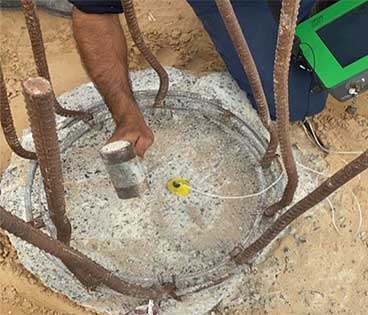6. It is important to mention that it difficult to distinguish between reflections coming from soil conditions or from pile impedance changes, especially with soils that exhibit a relatively high friction where the integrity evaluation may be inconclusive. Furthermore, any decrease in impedance should be checked with respect to the nominal impedance where it is difficult to quantify the acceptable values, hence to quantify whether any decrease in impedance could be considered as minor or major problem.
- Home
- About
- Services
- Low Strain Testing of Cast-In-Place Concrete Piles
- Integrity Testing of Cast-In-Place Concrete Piles Using the Cross Hole Sonic Logging Technique
- Pile Drivability Analysis and Acceptance Criteria
- High Strain Dynamic Testing of Cast-In-Place Concrete Piles
- Pile Instrumentation Monitoring using Vibrating Wire Strain Gauges
- Calliper Logging Of Boreholes, Excavations And Trenches
- Bi-Directional Static Load Test On Board / Driven Piles
- High Strain Dynamic Testing / Monitoring of Steel Piles
- Projects
- Quality Policy
- Certificates
- Contact



